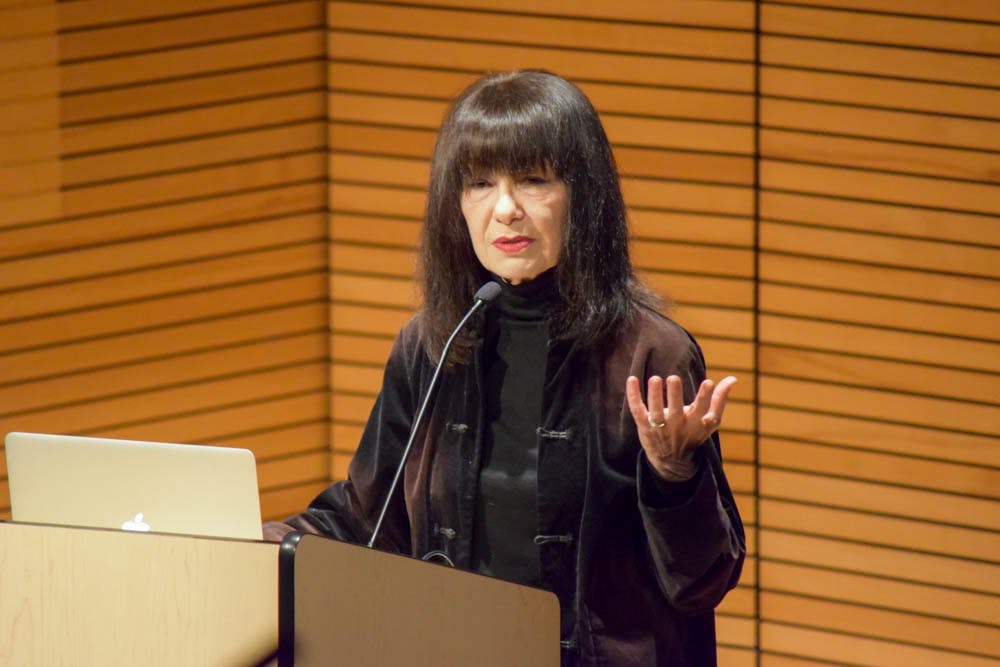Opera productions set in the middle of Times Square. A twelve-hour performance of Mozart’s Marriage of Figaro. Giant horse costumes dancing in a circle and lavish, Futurist dinners.
All these have been curated by Performa, a New York City-based institution founded in 2004 that uses biennials to highlight the importance of performance art throughout the twentieth century and beyond. The founder, RoseLee Goldberg, a renowned art historian, critic and curator, gave a lecture Wednesday, focusing on her career as the founder and director of the nonprofit arts organization.
The lecture was sponsored by the Brown Arts Initiative, whose “mission is to support all that is experimental, forward-thinking and cutting edge in the arts here at Brown,” said Butch Rovan, Faculty Director of the BAI. “I can’t think of anyone that better exemplifies that than RoseLee Goldberg,” he added.
Goldberg influenced the discipline of performance art with her book “Performance Art: From Futurism to the Present.” The book, which was first published in 1988, “has been a key text for teaching performance in universities throughout the world, including here at Brown,” said Anne Bergeron, managing director of the BAI. Goldberg’s book has since been published in 13 different languages, she added.
Goldberg said she is fascinated by the people who are put on the sidelines in the conventional telling of the twentieth century’s artistic history. Women, for example, have often been omitted when looking back on the story of the twentieth century. Female artists had a difficult time piercing into the avant-garde art world — often their only way to break into the art sphere was through experimental dance. For this reason, performance art plays an important role in the narrative of twentieth century art.
Performa studies performance art pieces of the past and brings them back into the spotlight. The aim is “not to recreate these moments but to do a contemporary version of what these pieces may be about,” Goldberg said. “In each discipline, we’re taking these historic moments, reaching back, talking about what that period was about, reinvestigating it and then finding ways to rethink of it in a contemporary vein.” Performa’s performance art festivals occur every two years, with the next one planned for November 2017. Each performance within the festival is set in a unique venue across New York City.
Beyond the study of performance art’s historic role, Performa invites contemporary artists to collaborate with them in the creation of modern performances. These commissions include artists with varying levels of performance art experience, often featuring artists from other disciplines.
Past Performa productions include a puppet show put on by sculptor and painter Wyatt Kahn. The show featured puppet-versions of Kahn’s own paintings engaging in dialogue with each other. There have been dance productions where half of the dancers were painted in gold and the other half in black. During their show, as dancers moved and interacted with each other, their body paint mixed and blended so that each dancer appeared as a burnished golden statue come to life.
Through its unconventional performances, Performa is “a celebration of the extraordinary imagination of the artist,” Goldberg said.
Correction: A previous version of this article said that Performa hosts "biannual festivals to highlight the importance of performance art." In fact, they host biennials. The Herald regrets the error.





